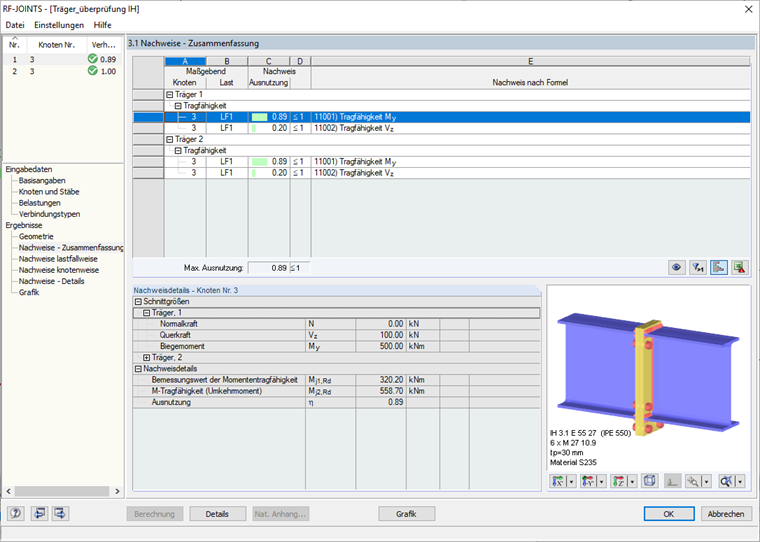In addition to geometry input errors, this discrepancy is usually caused by a different calculation basis of both add-on modules.
The design of an end plate joint with the RF‑/JOINTS Steel – DSTV add-on module is carried out by comparing the saved ultimate limit states with the design internal forces. The underlying resistances are taken from the current DSTV guidelines.
When using the RF‑/JOINTS Steel – Rigid add-on module, the joint resistances are calculated according to DIN EN 1993‑1‑8 by means of the component method. Thus, you can directly affect the results via the settings you have made.
In this case, an elastic distribution of bolt forces is used as a basis by default. You can activate additional load capacities by selecting the plastic force distribution in the joint. These are already included in the ultimate limit states according to the DSTV guidelines.
In order to obtain comparable results between both add-on modules, it is necessary to apply the plastic force distribution for the calculation. Furthermore, you should pay attention to the correct modeling of the joint geometry.



